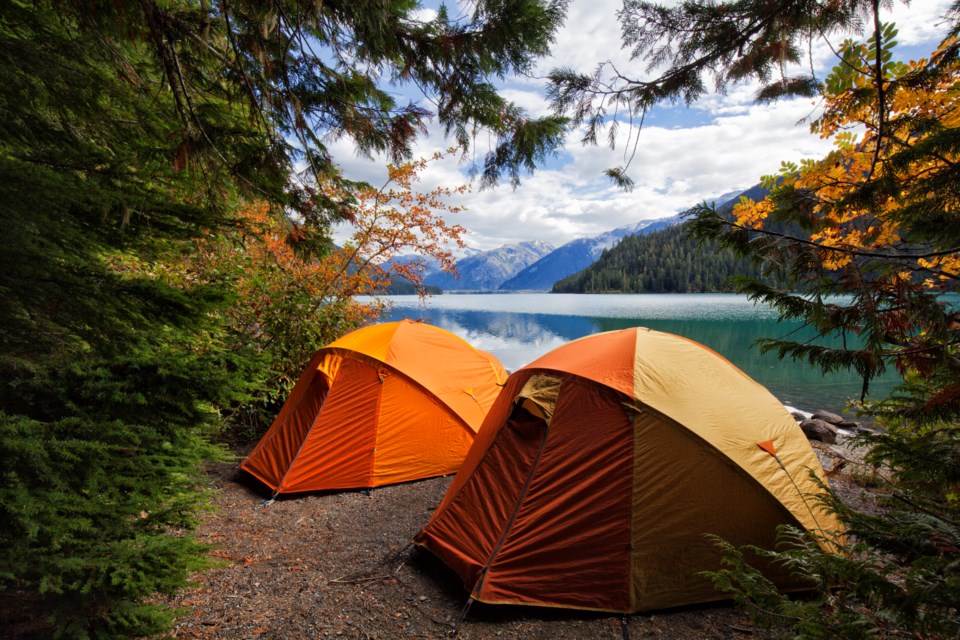British Columbia’s network of provincial parks saw a record 3.1 million campers pitch tents in 2021, an upward trend that sees no sign of waning.
That represents a more than half-million spike in campers since 2014 when fewer than 2.6 million people stayed overnight in provincial parks. Last year, 2.9 million people camped in BC Parks, despite a six-week closure due to COVID-19. This year, as the pandemic continues to drive many visitors online, more than 260,000 booked a campsite through the province’s , another record.
“This year has been another exceptionally busy season for BC Parks with more people than ever seeking the benefits to their health and well-being that nature and open spaces provide,” said Minister of Environment and Climate Change Strategy George Heyman in a written statement.
Last spring, the B.C. government's budget boosted park funding to $83 million, spread out over three years. That’s a recreation and environmental groups had called for.
The money — which at the time the province said will increase BC Parks’ capital budget by 57% and operating budget by 22% — will go toward maintaining park operations, constructing new park facilities such as campgrounds, and improving accessibility for visitors with strollers or physical disabilities. Funds will also be directed to protecting park ecology and hiring staff to manage parks.
On Monday, the Ministry of the Environment and Climate Change Strategy provided some details on where the first tranche of that money was headed.
In a press release, the ministry said $21.5 million — just under 26 per cent of the total funding — would go to expand and improve campsites, trails and other facilities across 10 parks.
Glacier Media reached out to the Ministry of Environment and Climate Change Strategy to understand how much money would be spent at each park. On Tuesday, ministry spokesperson David Karn said it is "not possible to provide a breakdown by park at this point."
LOWER MAINLAND - SEA-TO-SKY CORRIDOR
- Cypress Provincial Park: The popular North Shore park will receive an undisclosed amount of the $21.5 million in funding to fix existing trails and improve access to the backcountry.
- Garibaldi Provincial Park: The sprawling alpine and forested park will receive funds to develop the loop trail linking Singing Pass to Blackcomb Mountain.
- Golden Ears Provincial Park: Known for snaking lines of vehicle traffic during the pandemic, this park north of Maple Ridge will have its parking expanded.
- Stawamus Chief Provincial Park: The 撸奶社区outdoor playground will receive money to build new trails, improve existing ones and expand its parking options.
- Cultus Lake: South of Chilliwack, the popular lakeside park will prioritize development of the Watt Creek parking lot and improved access to Teapot Hill Trail.
VANCOUVER ISLAND
- Miracle Beach Provincial Park: Off Highway 19 between Courtney and Campbell River, this park will get an undisclosed amount of money for a new bicycle flow track and other trail upgrades to make it more accessible.
- Rathtrevor Beach Provincial Park: This seaside park in Parksville will see improved accessibility for day-use trails.
INTERIOR, CENTRAL AND NORTHERN B.C.
- Sun-Oka Provincial Park: On the southeastern shores of Okanagan Lake, this park will receive provincial dollars to re-build paved park trails to improve accessibility.
- Babine Mountains Provincial Park: Lying roughly 20 kilometres northeast of Smithers, the ministry says it will invest an undisclosed amount of money to build new trails and upgrade and re-route existing ones.
- Lakelse Lake Provincial Park: The province says it will improve accessibility to the Twin Spruce Trail and the Furlong Bay Campground in this park south of Terrace.
Karn added that more campsite infrastructure expansion is in the planning stage, and the province is currently consulting First Nations and experts in archaeology and environmental assessment on how to proceed.
Of the $83-million, three-year investment in parks, $15 million will go toward buying new parkland and $2 million has been earmarked to improve high-use trails and facilities across the province.
Karn could also not provide details on how that money would be spent.


